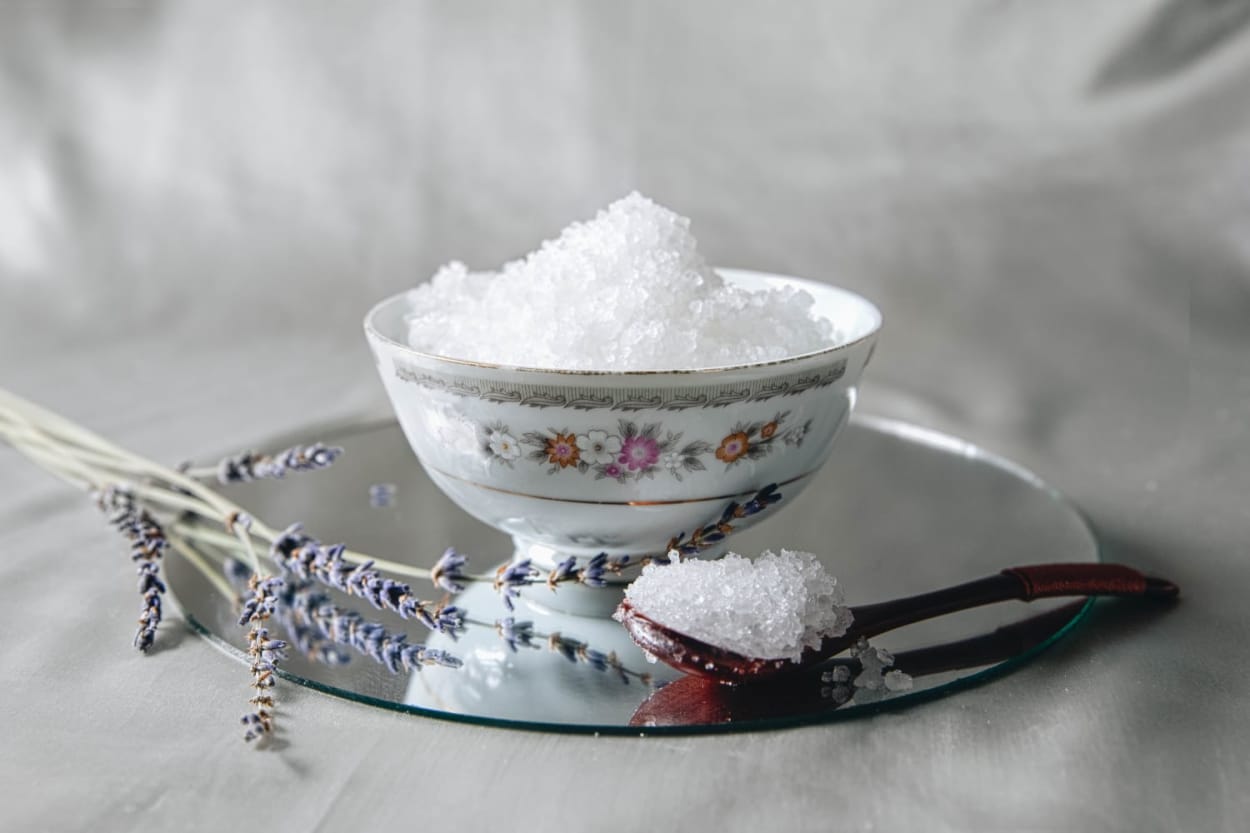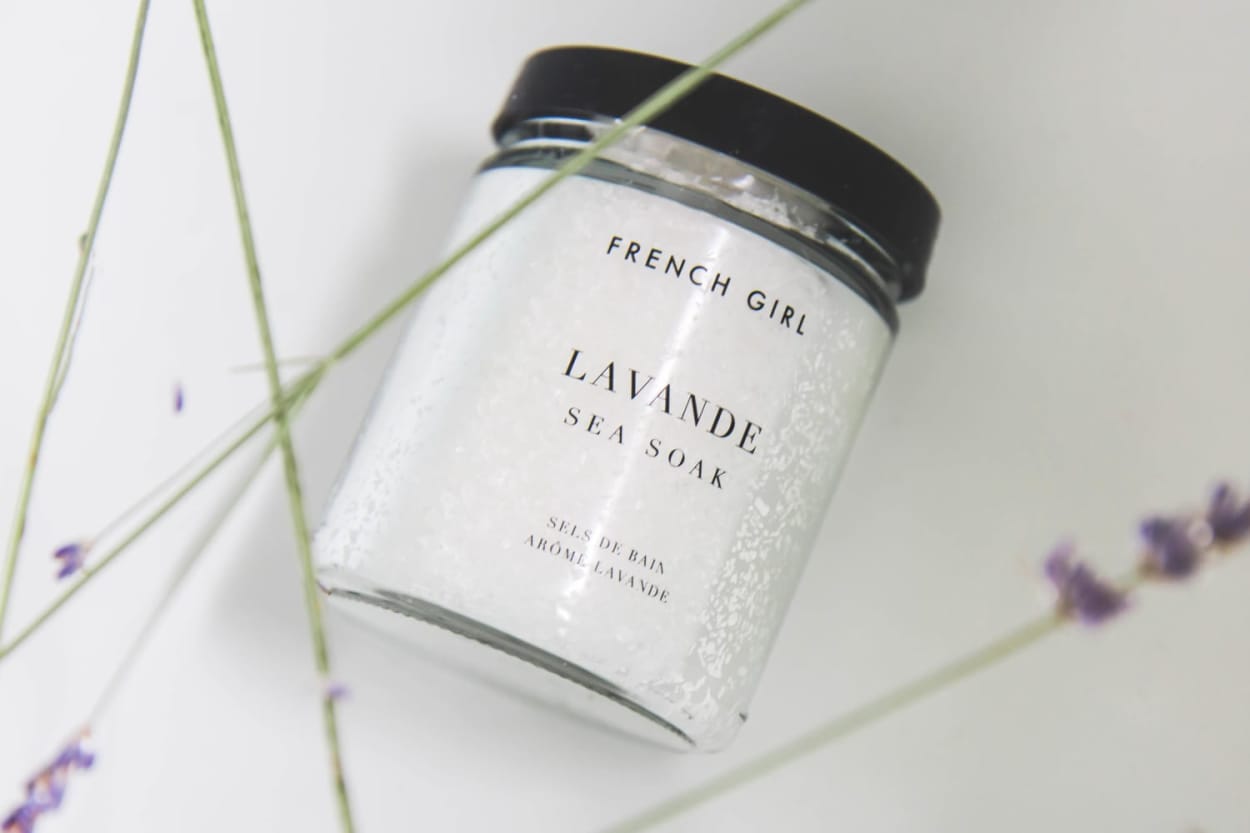Our latest muse and the star of our newest collection: the Lavender flower. Native to the Old World, Lavender is a vital bio-active botanical with a history as rich and beautiful as its scent. An old and sacred flower, Lavender has been an essential part of daily life for cultures around the globe for thousands of years. In honor of the recent debut of Lavande, we wanted to share some of the magic and mystery behind the flower that inspired our most luxurious collection to date.

LAVENDER THROUGH THE AGES
The lavender flower has a history steeped in folklore, romance, and mysticism, going back centuries to eras and peoples lost in time. The therapeutic properties of the flower can be traced back for nearly 3,000 years, from ancient empires ruled by Pharaohs to the opulent royal châteaux of Renaissance France.
The lavender flower has a history steeped in folklore, romance, and mysticism, going back centuries to eras and peoples lost in time. The therapeutic properties of the flower can be traced back for nearly 3,000 years, from ancient empires ruled by Pharaohs to the opulent royal châteaux of Renaissance France.

Some of the earliest documentations of Lavender can be found in ancient Egypt, where lavender was used extensively in perfumery and as an important part of embalming and mummification. When King Tutankhamen’s tomb was discovered in 1922, archaeologists found urns filled with lavender that still retained some scent. It was also placed on the heads Egypt’s elite in solid cones, and as it melted, covered the body in its opulent scent.
In ancient Greece, the flower was called “Nardus or “Nard,” a reference to the Syrian city of Naarda, where it was often sold. The Greeks used lavender primarily in bathing rituals, perfumery, and aromatherapy.
The flower got its more contemporary name during Roman times. “Lavender,” derived from the Latin verb lavare, “to wash,” reflects its usage during this era in soaps, candles, and bathing.
Lavender was also extremely expensive during this time – one pound of the flower being said to equal one month of wages for a common laborer – and therefore came to symbolize wealth and luxury in most cultures.

A favorite amongst several famous rulers around the globe, Lavender found particular favor in the palaces of Europe. Charles VI of France slept with lavender-filled pillows to get a restful sleep (a practice continued today with lavender sachets, pillow sprays, and eye pillows). Queen Elizabeth I of England required vases of fresh Lavender flowers around the palace each and every day of the year. Louis XIV famously loved taking Lavender-infused baths, and Queen Victoria used the flower as a deodorant.
MODERN LAVENDER
Today, Lavender has retained its luxurious reputation, although it is no longer only accessible to the elite. While the flower is primarily used in bathing, skincare, and aromatherapy, recent studies have shown that the herb may have practical medicinal uses as well. According to Healthline*, Lavender has four main scientifically-backed benefits: *please refer to Healthline for links to all mentioned studies

1. Calming and Mood-Boosting
Lavender has officially been classified as one of the few alternative medicines for Generalized Anxiety Disorder, having passed rigorous scientific assessments for efficacy.
Additionally, Lavender has been shown to help calm and reduce anxiety in manners similar or equivalent to conventional anxiety medications, according to controlled trials.
In several different studies, lavender helped relieve depression in hospice patients, lessen anxiety before and after surgeries, and was found to have effects in participants comparable to paroxetine, an SSRI medication used to treat depression.

2. Inducing and Improving Sleep
According to a study outlined in Healthline, when inhaled, Lavender was found to improve the sleep of those in intensive care or fighting cancer. In additional studies, students with sleep issues reported an improvement in sleep quality and increased energy with the aid of Lavender, while pilot studies showed using Lavender resulted in a reduction of Restless Leg Syndrome.

3. Improving Memory
Studies have shown that inhaling lavender improved working memory in stressful situations.

4. Relieving Pain
Studies into Lavender Essential Oil has also shown the herb to be beneficial before and after surgery, and in treating headaches, lower back pain, arthritis, and carpel tunnel.
Clinical studies have proven that lavender has antiseptic benefits, helping to treat bruises, burns, wounds, and stop the spread of bacteria. Lavender also has scientifically backed healing properties for skin, as the herb is anti-inflammatory, antibacterial, and antifungal. This makes lavender ideal for use in skincare, bath and body products, and even topical medications.

Lavender’s extensive history, revealing use in everything from cooking, cleaning, and bathing to healing, perfumery, and religious rituals, continues today, as the flower continues to prove a vital piece in medicine, mental health, and self-care.

With our Lavande collection, we wanted to capture the romance and opulence associated with early uses for Lavender while incorporating a modern understanding of the flower, utilizing its aromatherapeutic properties in contemporary formulation techniques to create an unparalleled bathing experience.
LAVANDE
Inspired by the mystique of the Old World, FRENCH GIRL’s new Lavande collection takes notes from ancient practices of medicine and herbalism to create a luxurious bathing experience perfumed by the sweet, alluring scent of White Lavender.
EXPLORE LAVANDE





